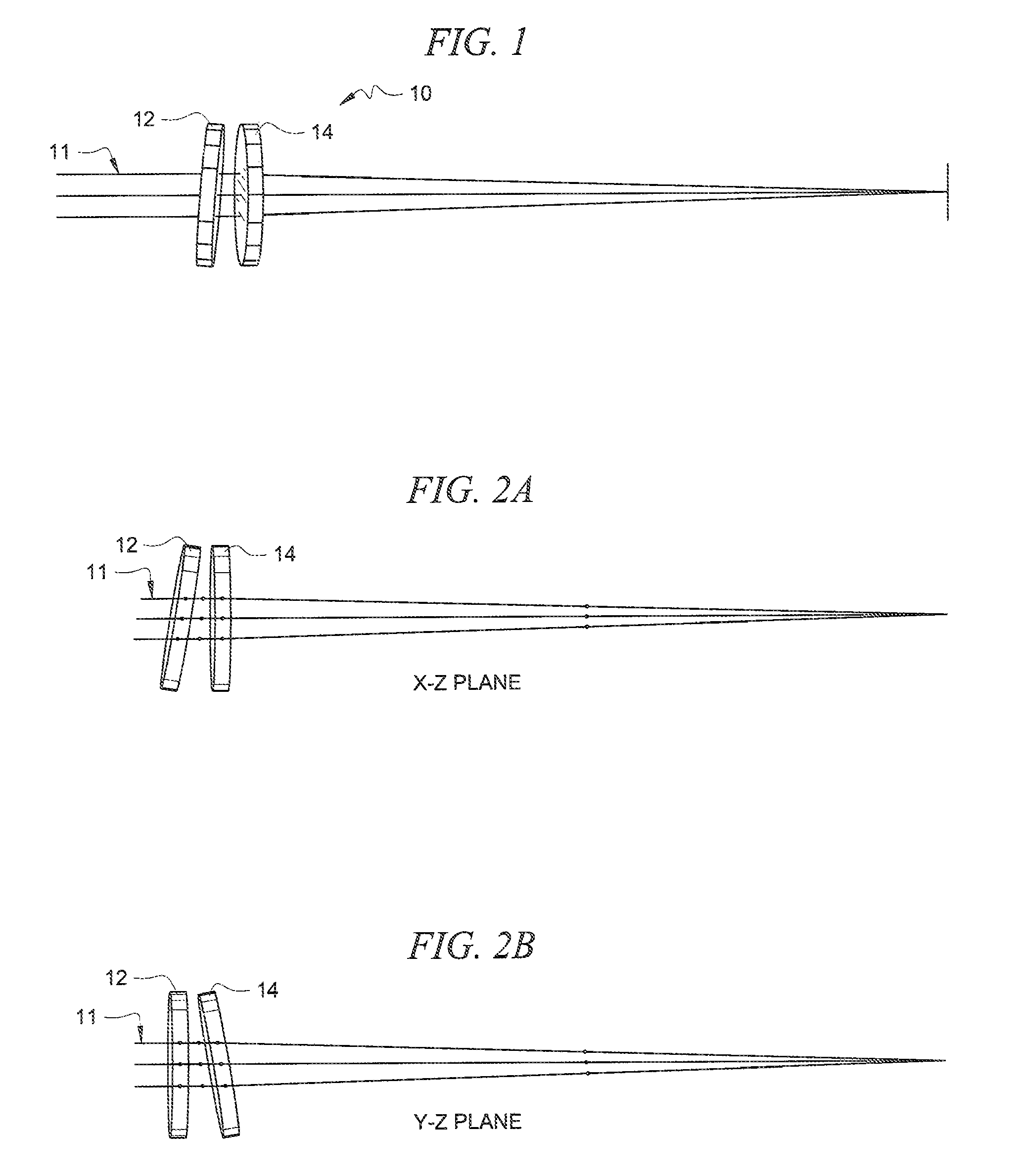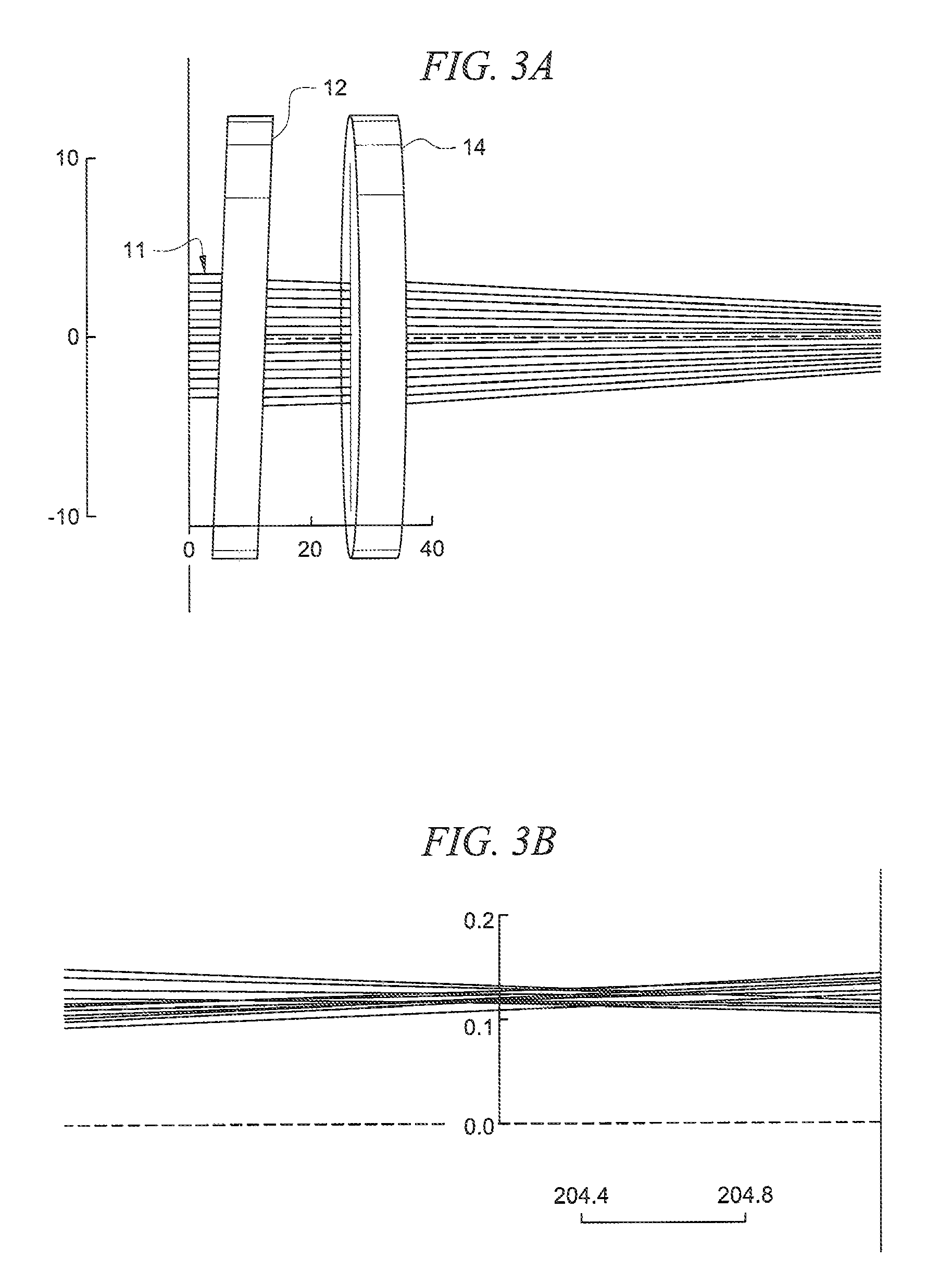Precision laser machining apparatus
a laser machining and precision technology, applied in the field of optical scanning devices, can solve the problems of great difficulty in providing high accuracy of geometries below 250 microns by the same scanner, and achieve the effect of excellent precision and repeatability
- Summary
- Abstract
- Description
- Claims
- Application Information
AI Technical Summary
Benefits of technology
Problems solved by technology
Method used
Image
Examples
first embodiment
[0048]Referring now to FIG. 1, there it will be seen that the invention is denoted as a whole by the reference numeral 10.
[0049]Incoming laser beam 11 passes through a pair of inverted positive meniscus lenses 12 and 14. Each lens is mounted to a galvanometer to tilt each lens perpendicular to one another to displace the focus laser spot from the original optical axis. The preferred optical material is the highest possible index material for the desired laser wavelength. Having a high index allows the thickness of the lenses to be as thin as possible to minimize optical aberrations and minimize the inertia on the galvo.
[0050]In FIG. 2A lens 12 is tilted about the Y axis to displace the focused laser beam in a controlled manner along the X axis from the original optical axis.
[0051]In FIG. 2B, lens 14 is tilted about the X axis to displace the focused laser beam in a controlled manner along the Y axis from the original optical axis.
[0052]An amplified ray trace of the X-Z plane as ligh...
second embodiment
[0056]FIGS. 4A and 4B depict a second embodiment for displacing a focused laser beam from an optical axis. A laser beam enters a galvo scanner device that includes first and second galvo mirrors 16a, 16b. The beam is reflected from first galvo mirror 16a onto second galvo mirror 16b. From second galvo mirror 16b, the beam passes through F-theta lens 18 which typically includes three (3) lens elements as depicted in the drawing surrounded by a dashed rectangle. The beam exits F-theta lens 18 and passes through a pair of parallel plates 20, 22, each of which is mounted to a galvanometer. The parallel plate galvanometers are orientated orthogonally to one another so that the beam can be offset from the optical axis in a controlled way. The offset of the beam is determined by the angle of the plate, its thickness and the index of refraction of the plate. The dashed lines at the focal point of the lens represent the original optical axis. FIG. 8A depicts the X-Z plane and FIG. 8B depicts...
PUM
 Login to View More
Login to View More Abstract
Description
Claims
Application Information
 Login to View More
Login to View More - R&D
- Intellectual Property
- Life Sciences
- Materials
- Tech Scout
- Unparalleled Data Quality
- Higher Quality Content
- 60% Fewer Hallucinations
Browse by: Latest US Patents, China's latest patents, Technical Efficacy Thesaurus, Application Domain, Technology Topic, Popular Technical Reports.
© 2025 PatSnap. All rights reserved.Legal|Privacy policy|Modern Slavery Act Transparency Statement|Sitemap|About US| Contact US: help@patsnap.com



